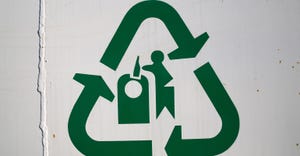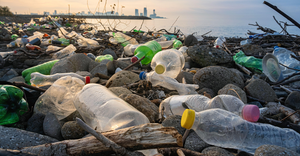As of 2016, there were 648 landfill gas-to-energy (LFGE) projects in the U.S., and the U.S. Environmental Protection Agency’s (EPA) Landfill Methane Outreach Program (LMOP) has supported many of them. Its partners are communities, landfill owners and operators, utilities, power marketers, states, project developers, tribes and nonprofit organizations.
The voluntary program, which launched in 1994, has grown to 1,100 partners who tap into varied supports, sometimes to develop first-of-a-kind projects that have gone on to serve as industry models.
“As the industry matured, LMOP has focused on the development and dissemination of technical tools and resources, including a comprehensive database on landfill gas-to-energy projects and candidate landfills, a cost-estimating tool that provides an initial economic feasibly analysis for developing a landfill gas-to-energy project and a handbook that provides an overview of energy project development,” says Kirsten Cappel, LMOP program manager.
Fostering partnerships and creating networking opportunities have played a large part in these initiatives.
In North Carolina, for example, Watauga County developed a model project at its small, closed landfill—the first LFG-fired application of an engine previously used only to destroy methane from coal mine gas. This project was supported by LMOP.
“The project used a technology called automotive engines to power generators,” says Stan Steury, a research scientist at Appalachian Energy Center who supported the project. “They are little generators that can be purchased for less than a tenth of the cost of big engines. And we learned that they can be scaled for small landfills.”
Steury has been partnering with LMOP since 1997, when the program was first getting started and he was working on a small landfill in Yancey County, N.C.
“The LMOP project runners wanted to see activity at a smaller landfill, where most developers would not consider putting projects for smaller generators,” says Steury. “There was little revenue for them, so we were helping Yancey develop it to power glass furnaces and pottery kilns and to heat greenhouses.”
LMOP sent out a facilitator to help with the development.
“She was using us as the pilot for others considering small scale. The Wataugo County project came after that because they saw what was happening in Yancey,” comments Steury. “LMOP showed us how to do gas collection and what was already done with landfill gas. Then, it did a free feasibility study.”
With the first project, LMOP linked managers to vendors for bids on gas collection systems and pipelines installations. At the time, an EPA grant was available and secured to hire a manager for one year who was dedicated to developing the project.
With Watauga County, LMOP provided support similar to the Yancey County project.
“Our partnership now is the same, although we are addressing different challenges,” says Steury.
Watauga County decided to tap into landfill gas because there was development happening around the landfill and methane was migrating offsite. The county ended up installing a collection system to ensure the community’s safety and reduce exposure to pollution.
LMOP has been instrumental in reducing methane emissions from hundreds of landfills, avoiding CO2 emissions totaling approximately 42.5 million metric tons of C02 equivalent in 2016 (global warming that greenhouse gas may cause, based on C02.)
Over the past 22 years, the 649 energy projects LMOP has assisted have collectively reduced and avoided more than 427 million metric tons of CO2e, says Cappel.
Gundersen Health System has gas piped from La Crosse County Landfill in Wisconsin to one of its campuses where it’s run through an engine to generate electricity for the grid and for heat for the campus.
“We were looking for a project to hit our goal of becoming energy independent and contacted LMOP to see if the project would make financial sense,” says Corey Zarecki, director of Envision, Gundersen Health System’s energy program. “They helped put numbers together about projected landfill life potential, financial impact, cost, payback and revenue. And the data helped move this project to the next phase, which was taking high-level, concrete numbers to our leadership to get approval for capital for this project.”
LMOP also maintains and updates information that partners tap into, including a list of landfills across the country with data such as tonnage of waste, gas potential and potential payback.
“At this point, we’re off the ground and no longer working with LMOP,” says Zarecki. “But we would go back to them if we wanted to work on another landfill project and recommend others looking to do projects like this to do so as a first step.”
About the Author(s)
You May Also Like




